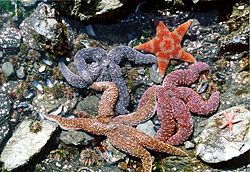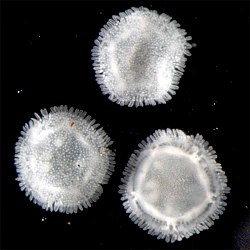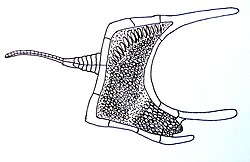


This List of echinoderm orders concerns the various classes and orders into which taxonomists categorize the roughly 7000 extant species [1] as well as the extinct species of the exclusively marine phylum Echinodermata.
Contents
- Subphylum Crinozoa
- Class Crinoidea
- Class Paracrinoidea †
- Class Cystoidea
- Class Edrioasteroidea †
- Subphylum Asterozoa
- Class Ophiuroidea (Brittle stars)
- Class Asteroidea (Starfish)
- Subphylum Echinozoa
- Class Echinoidea (Sea urchins)
- Class Holothuroidea (Sea cucumbers)
- Class Ophiocistioidea †
- Class Helicoplacoidea †
- Subphylum Blastozoa
- Class Blastoidea †
- Class Eocrinoidea †
- Subphylum Homostelea / Homalozoa †
- Class Ctenocystoidea †
- Class Soluta †
- Class Cincta †
- Class Stylophora †
- References
















































